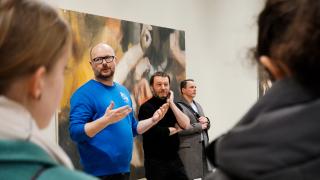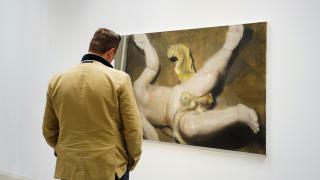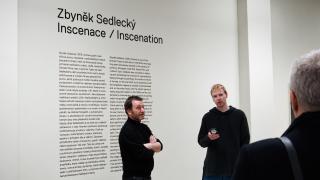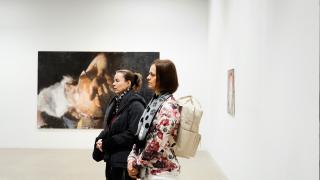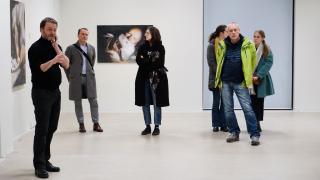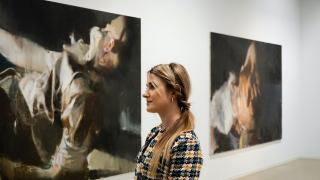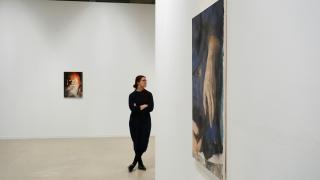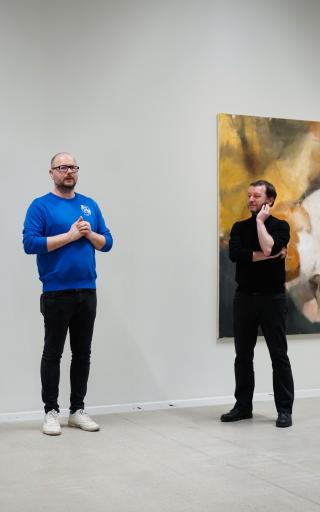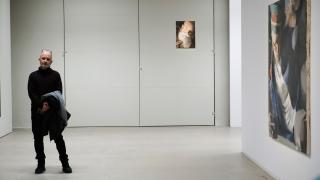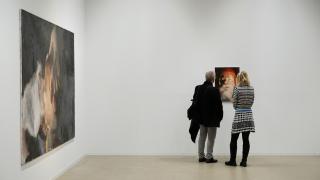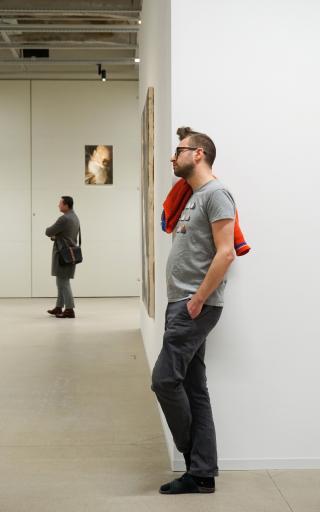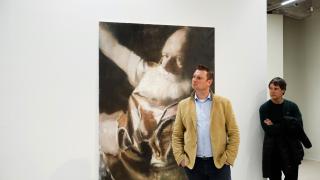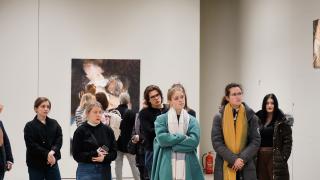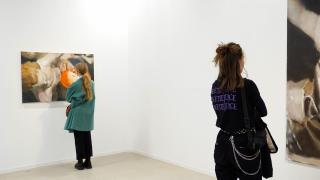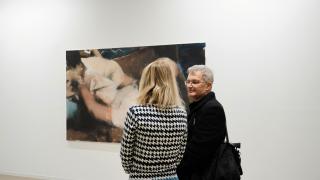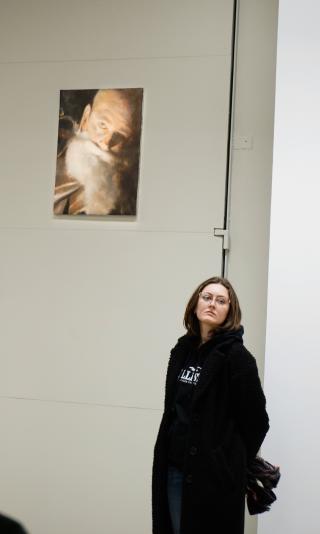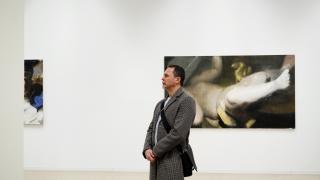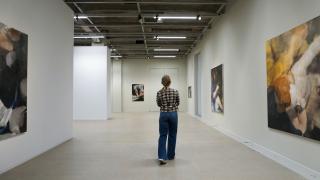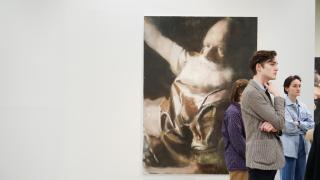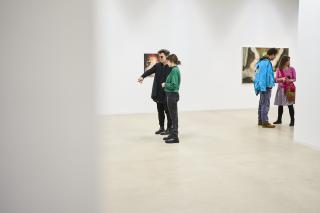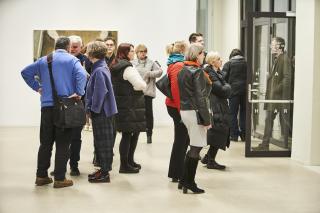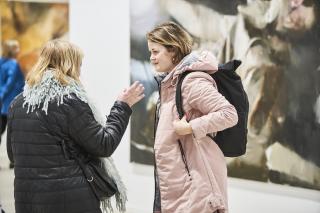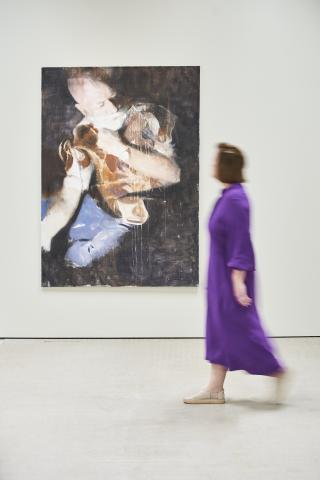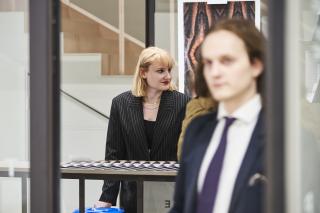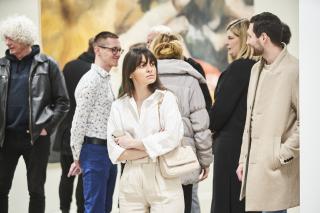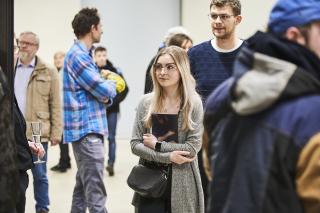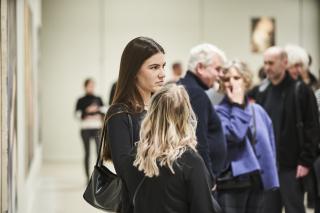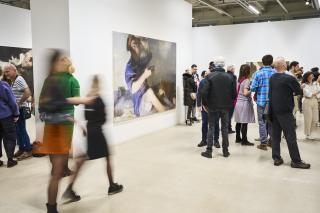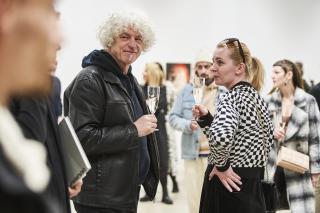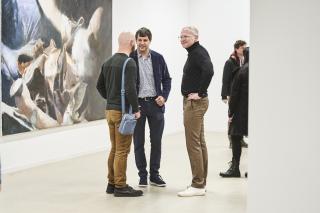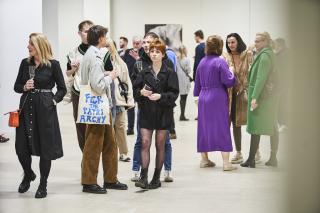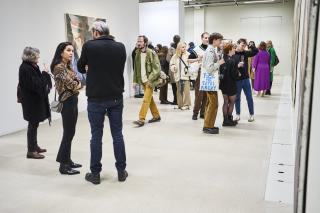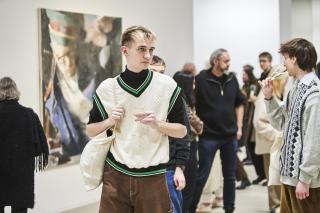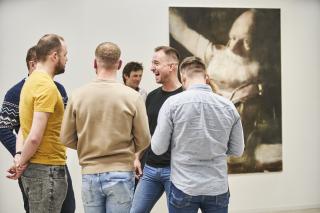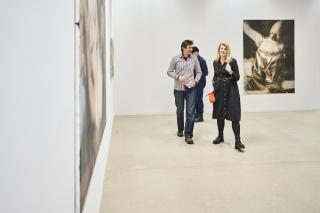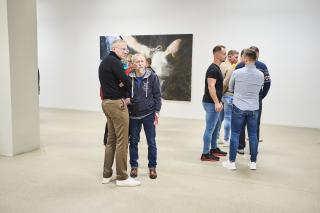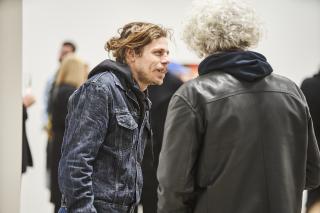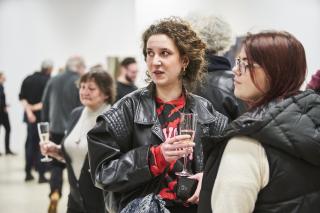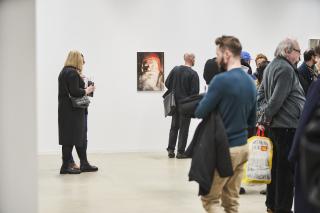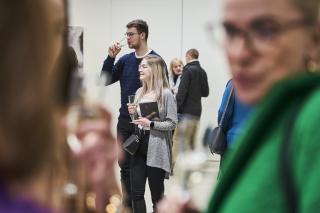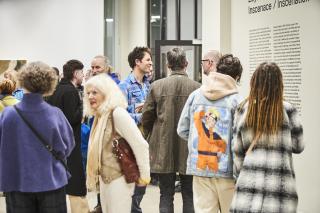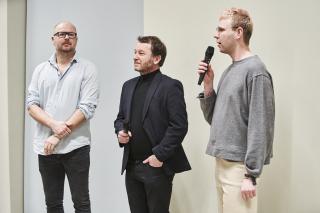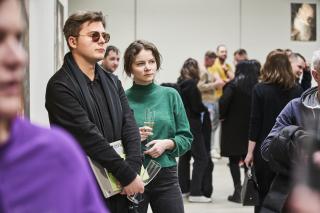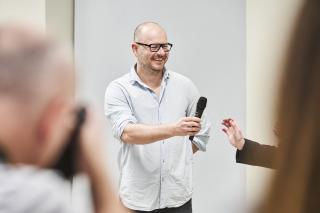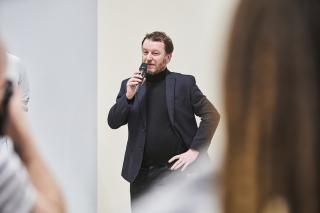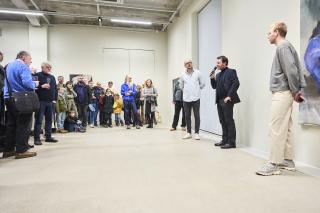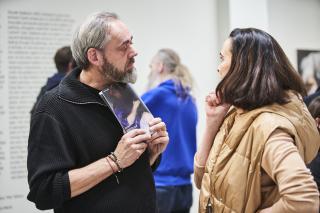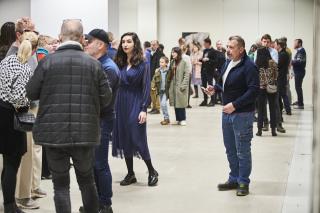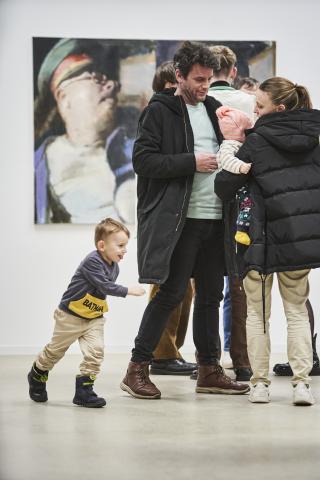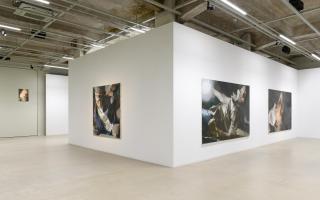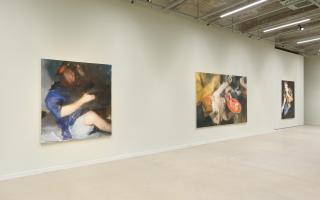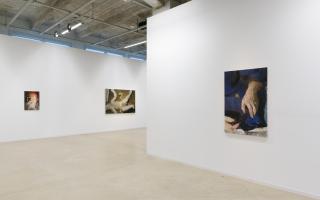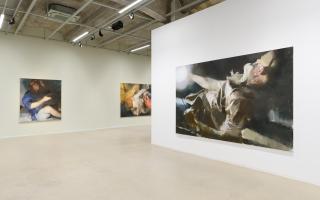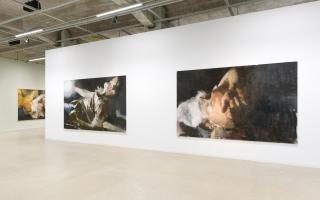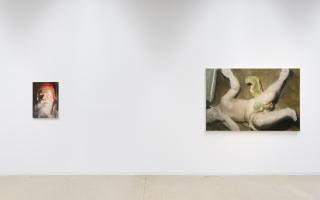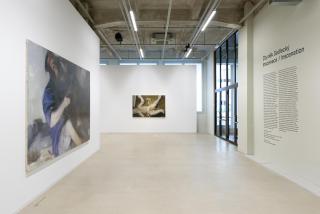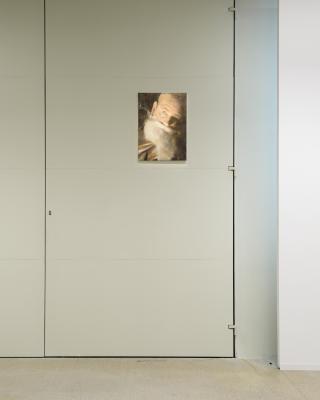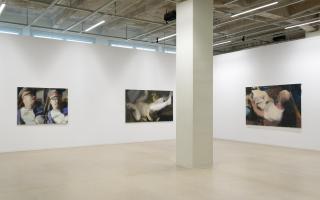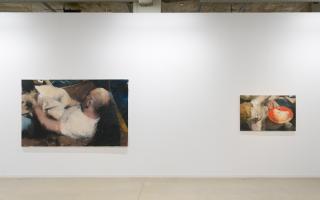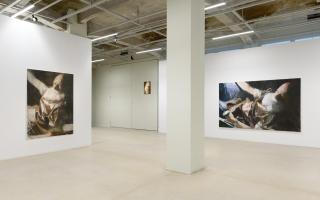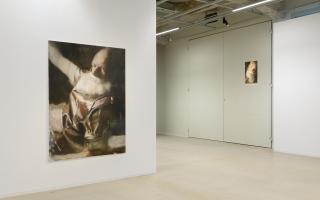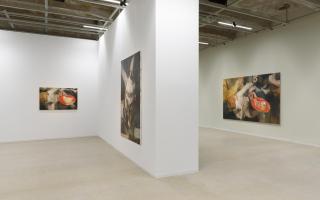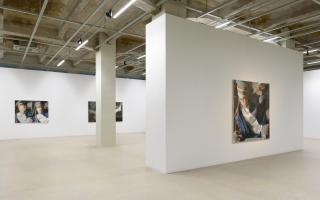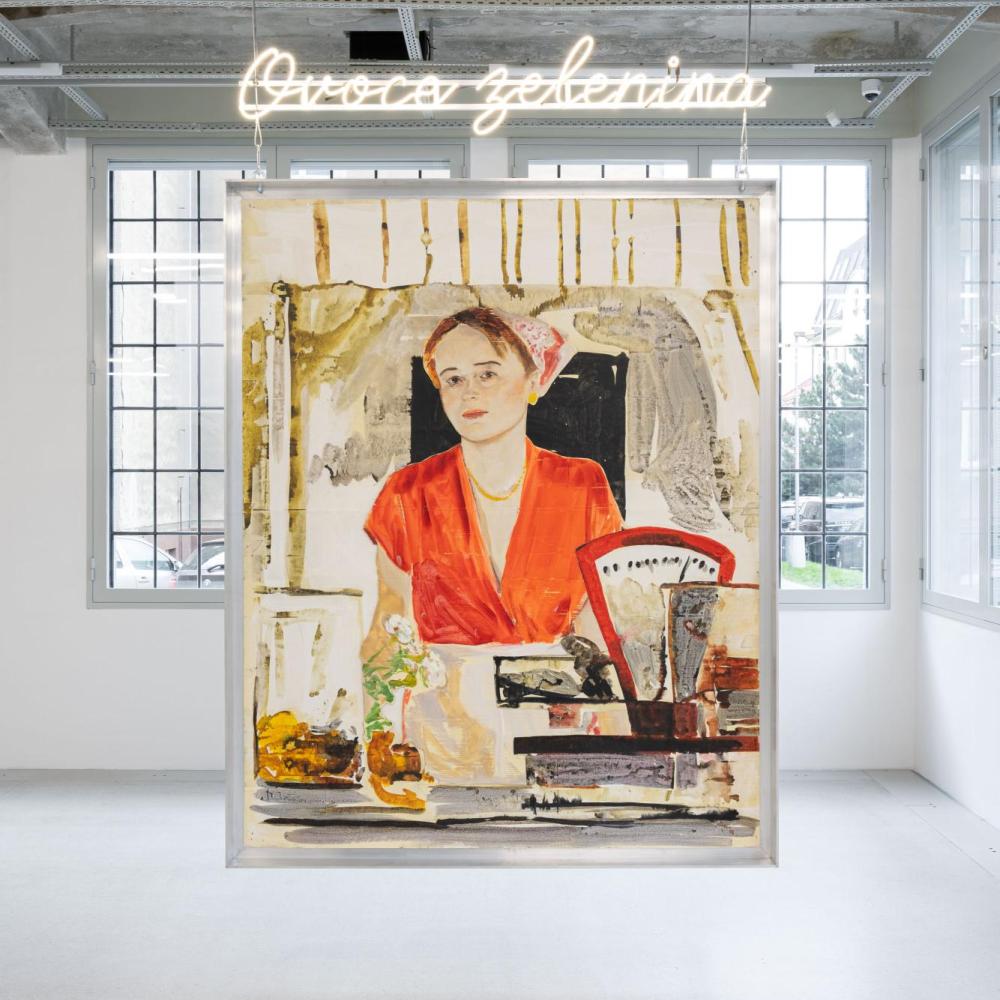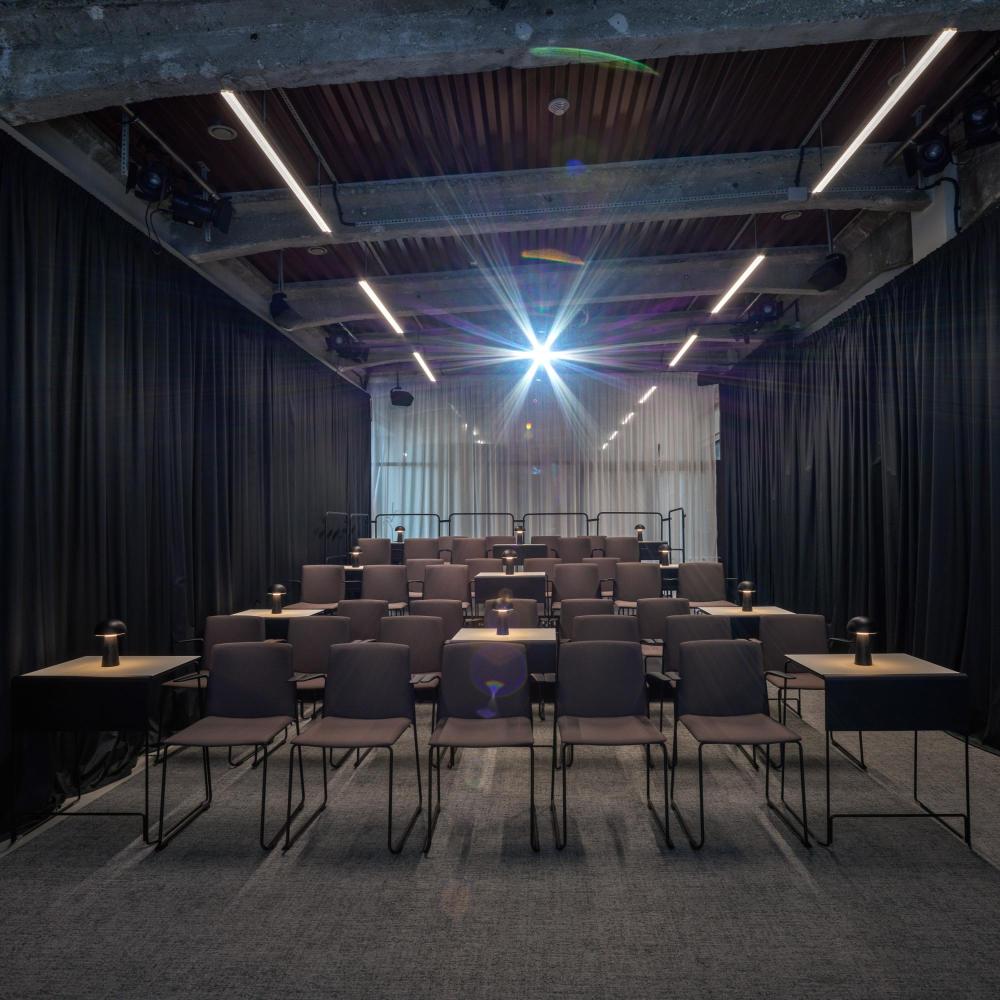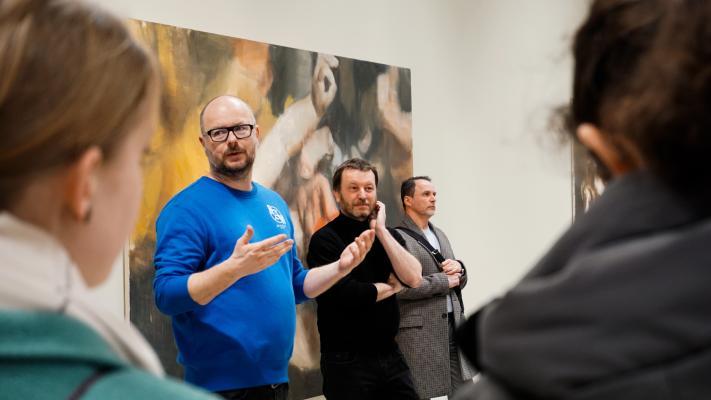
Reflection upon time, temporalities, and space constitutes a predominant part of your work. I am reminded of Michelangelo Pistoletto, when he claimed the figure of a man seemed to come forward, as if alive, in the space of the gallery, “but the true protagonist was the relationship of instantaneousness that was created between the spectator, his own reflection, and the painted figure, in an ever-present movement that concentrated the past and the future in itself to such an extent as to cause one to call their very existence into doubt: it was the dimension of time itself”. How do you see this dimension of time in your work?
I like your question because time is an important element in my painting on different levels. Painting, as such, stops time in its characteristic way by immortalizing past times and functions in the general memory as a kind of permanent and infinite value compared to the use of a photographic sketch, in which the observer stops for an untimely hundredth of a second. This also occurs in the reading of individual images depicting more or less classical pictorial objects, such as a figure, or a still life. I perceive more in the context of an untold story. It is then set in a certain timelessness, which, however, is strongly reminiscent of the personal and, in fact, the collective past.
Among other things, I once used these words as exhibition titles: Day and night, The high noon, and August – which also referred more to time limitation/ indeterminacy than to the content of individual image files. I am also tempted to think about time because people usually associate this greatness with performance, theater, and film. Is the time in a painting the time of the painting process or the stopping of the viewer or what happens between the lines inside the painting? I don’t know.
Perhaps the time is all these aspects together, accentuating the contemplative side of the artwork. As in your untold stories, still lifes, figures. Henri Bergson said that if our intellect spatialized time, it conceives of it as a physical body and divides it into equal segments. There is also an inner time, of consciousness, in which the various moments interpenetrate each other. I see this “inner duration” emerging from your works.
Yes, time in my approach runs inside the picture as if at its own pace, maybe at a different speed than to the viewer, who does not seem to run at all. At the same time, my work with this medium is quite intuitive, it is not somehow contrived. In what I am depicting, we find ourselves somewhere in the middle of the story, and there is no beginning or end to the process... We are right in the middle of it.
We could call it an “authentic temporality”. As with Marcel Proust, can we say that time, or rather timelessness, is a tool but also a subject of your works? Almost as if to tell time through time. As if to say that rather than representing time, you tend to present it?
Yes, I work so that the subject of my paintings is something behind. Seemingly everything that is in the picture is understandable and realistic, you can say. I’m probably interested in something like combining multiple images and looking from multiple sides. I’m actually trying to feel the importance somewhere between… Petr Vaňous once wrote that my work shows “nothing taken out of context”, which I like as such a definition of my research.
The main environment of your paintings is your studio. You seem to create a kind of “scenic terrain”, a non-space. What does your studio represent as a place in your paintings?
In contemporary work, the studio plays the role of a neutral environment, which could be a film studio, a backdrop, and an authentic workshop at the same time. It allows me both an excursion into the past of the depiction of such spaces and a genre-based civil basis for my work with the model, or the still life.
So you approach yourself as a scenographer. What is most important to you in this image-building process?
I use a model or object for a kind of compositional building or architecture. I work with light, but I don’t directly illustrate some literary story. Rather, I try to create a foundation so that a spontaneous moment or situation can happen here, which I then photograph as a kind of sketch for the final painting. Before I have been an outright non-participating observer and today I am more active even in composing the basic situation. Although I am most interested in what happens when I no longer have full control over things.
How exactly do you work with the model and the still life?
I choose the objects that I paint from the things that surround me, and that I happen to meet... I am fascinated by the moment that the banal object can turn into an important part of the visual narrative.
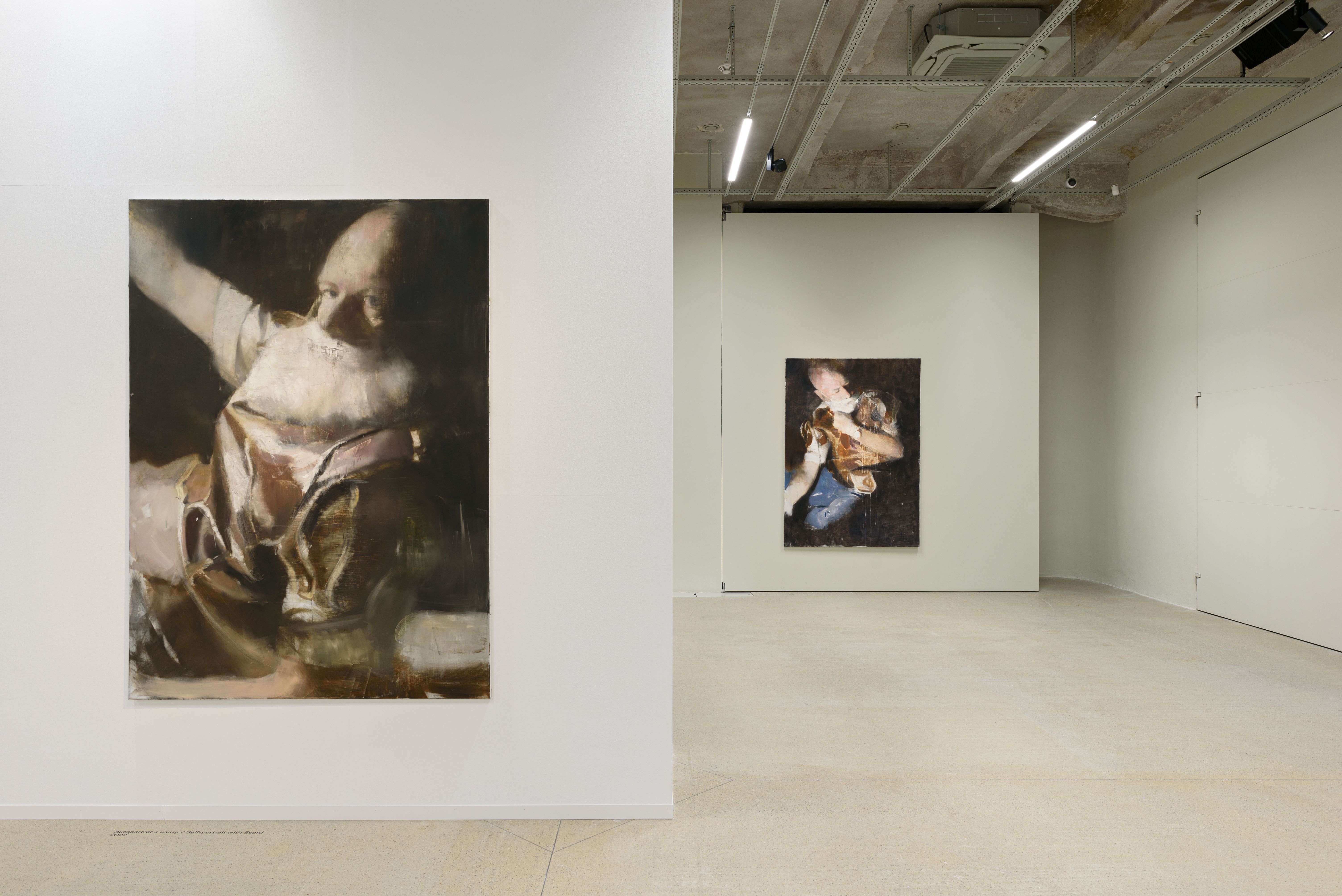
Your training also includes meeting Jiří Načeradský and Jiří Sopko. How important were they to you and how did they influence your artistic choices? And, also thinking about the artists of your generation, your cultural context, and the art that influenced you, what are your thoughts on painting making today?
Jiří Načeradský was an important solitaire who brought a fresh air of figurative painting into the Czech environment from the sixties. During the totalitarian regime, he was one of the authors who followed the practices of fine art outside and at the same time a kind of authentic Czech path to the influences of pop art, expression, art Brut, etc. Personally, he was quite uncompromising and strict as a teacher, but studying in his studio was inspiring and his work is highly appreciated in the Czech Republic. Jiří Sopko is an author of the same generation and is considered an important Czech colorist. As the head of the studio on AVU, he was the opposite of Načeradský... He let the students struggle very freely with the problems of their work, and his pedagogical interventions may have been precise, but minimalistic. Sopko is more of a taciturn folk philosopher, whereas Načeradský was very energetic, even in a somewhat self-destructive way. During my studies at AVU with Jiří Sopko, his assistant Igor Korpaczewski, a brilliantly introverted painter of the middle generation, was also important here. I respect several authors from my generation in the Czech environment. I like Daniel Balabán of Ostrava from the older ones, Jaromír Novotný, or the younger Adéla Jánská, Klára Hosnedlová, Daniel Pitín, and others who are close to me from my peers.
Outside of the scene of the Czech Republic, I admit that I am interested in the environment and the work of my generation, which deals with a painting that continues or in some way reflects the relationship with pre-modern painting. That is today called the Leipzig or Cluj School. Concerning the post-socialist reality of Central and Eastern Europe, I like Marius Bercea, Victor Man’s intimacy in small formats, and Nicola Samori’s legible connection of the historical image with the present. I also like the first photorealist authors like Vija Celmins, as well as the more famous Chuck Close, the American figuration of Erik Fischl, and the self-portraits of Joan Semmel. In Europe, I enjoy how they approach the legacy of the past in Belgium and Holland. They appreciate Michaël Borremans, Johannes Kahrs, or the great and atmospheric sea paintings of Thierry De Cordier.
Speaking of Borremans, he once declared in an interview that he never paints on a white canvas, finding it ugly and blinding. He says that if you give a certain colour to the surface of a canvas, you already have a starting point. How do you, on the other hand, approach the white canvas?
I like a white canvas, although sometimes I experiment with different types of material. White canvas allows me to see the real color when I apply a painting on it, so I don’t work on a toned base. But in the future, who knows?
Your work over time has naturally changed. Initially, you had a greater focus on architecture and landscape. Today you seem to focus more on figures. How did this shift come about? And what does self-portrait mean to you today?
In the past, I have worked a lot with the topic of definitely reinterpreting the landscape genre, especially the urban environment. I was interested in the changes in Central and Eastern Europe due to social and political changes in the nineties. I researched the forms of the architecture of the time and also urban sculptures. The anonymous figural cast was here as a measure of the entire space. Through some natural way of seeing and the process of painting itself, I gradually get closer to what is depicted. From an anonymous scale, a personal portrait is created, and from a landscape, a still life... My interest in a closer look at the human body may also be related to the fact that I teach drawing at a university and I automatically confront myself more with the history of depicting this subject.
For me, a self-portrait is a fascinating sub-theme that I have been working on and it is very practical to have a model constantly available. I am interested in self-portraits in the history of art, like Rembrandt, and Courbet, and also in the present world, like Joan Semmel. Or Czech authors, like Stratil and Bromová. In my paintings, I am in various not fully specified roles. As an actor in television production.
What you say about your self-portraits reminds me of Pirandellian characters. They know that they can only know what they can give form to. But they also know that a form, as soon as it is, ceases to be true and immediately becomes a mask, a grimace, an inert, empty statue. If those who contemplate these characters believe they are contemplating life in them, they are deceiving themselves. And behold, a man can be one, none and a hundred thousand and not only for others, who in order to know us must fix us in a form but also for ourselves who thought we were “one for all”; and suddenly we realize that we are a hundred thousand.
It means that everyone is important and cannot be overlooked... This also happens in those self-portraits in which I play a certain role. I feel that everyone is an individual, even though we play our stereotypical roles. As an actor, you can dress up as any character, but everyone will play it differently. There is no such thing as an uninteresting life: every story is different because the context changes. Moreover, if I work with some meanings and memories as an author I have no guarantee that it will be read similarly by the viewer. That’s the magic of interpretation.
A slight loneliness also emerges from your works at times, but without that hopperian distance relationship, without the perpetual waiting. It seems more like a shared solitude, less silent. How do you see this aspect of loneliness in your work?
In Hopper’s case, the loneliness of the characters is something that underlines the atmosphere of the space and moment. We don’t have to know exactly what it is about, but the atmosphere is very contemporary and American. Maybe some type of loneliness helps in the painting to direct the viewer from a literary plot to a visual, illogical, intuitive one. I do not know myself.
That’s it. It is a contemplative solitude in the painting itself, necessary to find the right meditative time…
There is a certain loneliness in the painting itself, but I don’t take it in a depressing or nihilistic way. The solitude in the painting also has a charm. It is about the concentration on individuality, the individual…
If before we were simply talking about contemporary art, today we must talk about Crypto Art. Many artists are adapting to the new phenomenon, blending tradition with the most innovative technologies. NFTs have exploded on world markets by moving exorbitant amounts of money. I believe in painting, and I think these “fads” are always short-lived. What is your opinion on this?
Due to the nature of the material and the type of activity, such as painting, I am a traditionalist. I’m not very familiar with NFT and stuff. but I feel like this is basically a reproduction, and that’s a problem for me. I watch a lot of art on the web and photos, but none of it can replace the authentic experience of being with it. Even without the possibility of actually touching the actual painting, I consider it important to perceive the haptic component of the painting, something like texture, touch, or smell… And that’s what I miss about those technologies.
I remember a funny story from my studies with Načeradský when he described how in the 1960s and 1970s in communist Czechoslovakia, they devoured rarely available magazines about foreign art... except that then all the reproductions were black and white. And a whole generation of authors who created in an “Informel” style was inspired by authors like Antoni Tàpies and so on. How surprised they were later when they had the opportunity to see some of those things live in color and found out that it was a completely different art! However, it was a unique creation of the possibilities of that time within the society of Czechoslovakia, and that is precisely why those things have their quality. So this is my take on this new experience. It may be beneficial to other authors than me. I think authors like me can take some important things from this new digital media but as a result, I like very much personal and handmade artwork. With all personal errors and coincidences.
